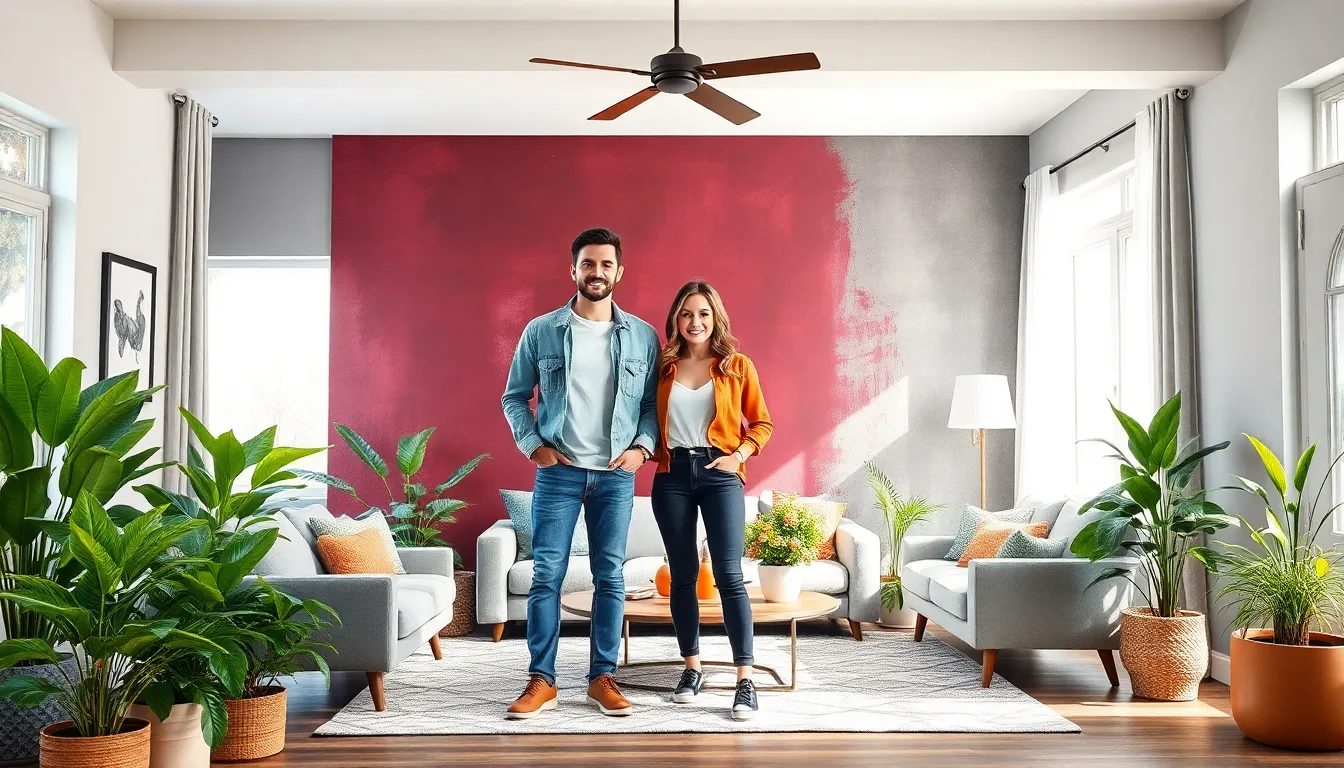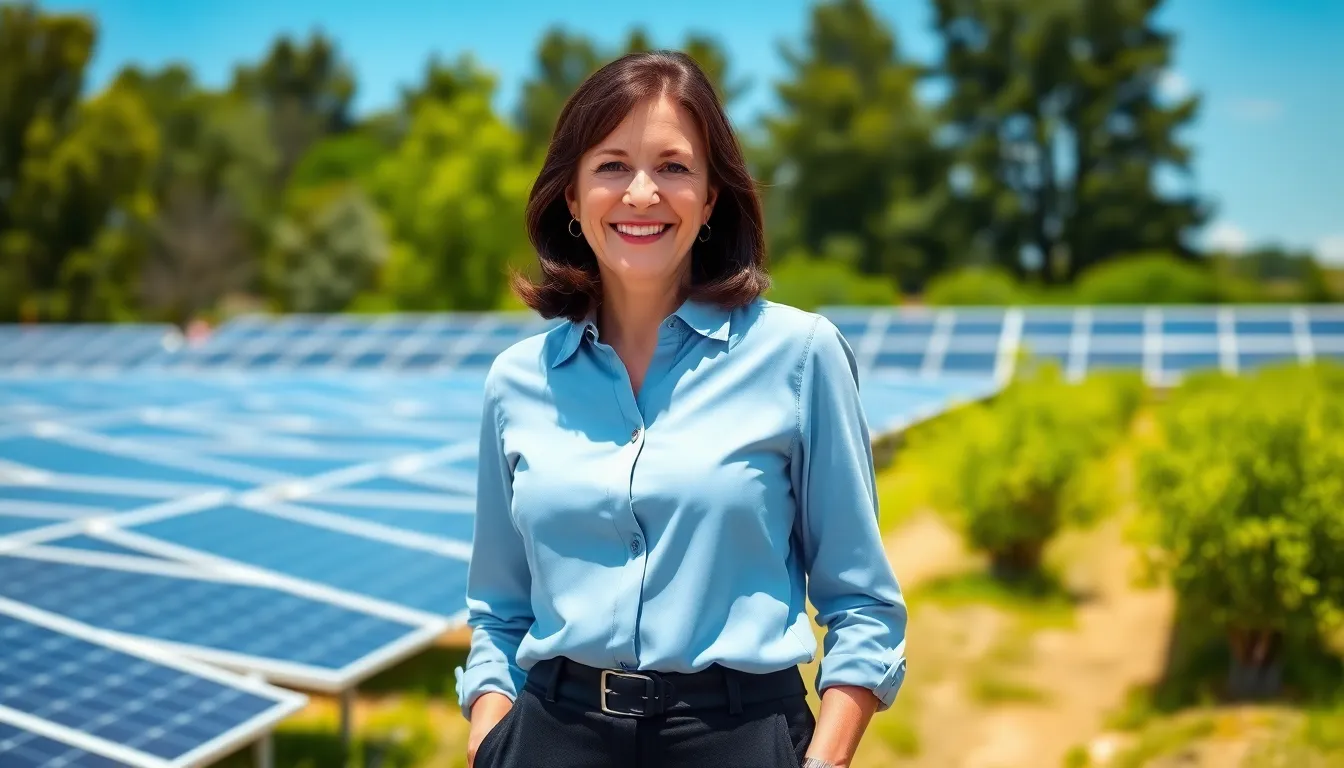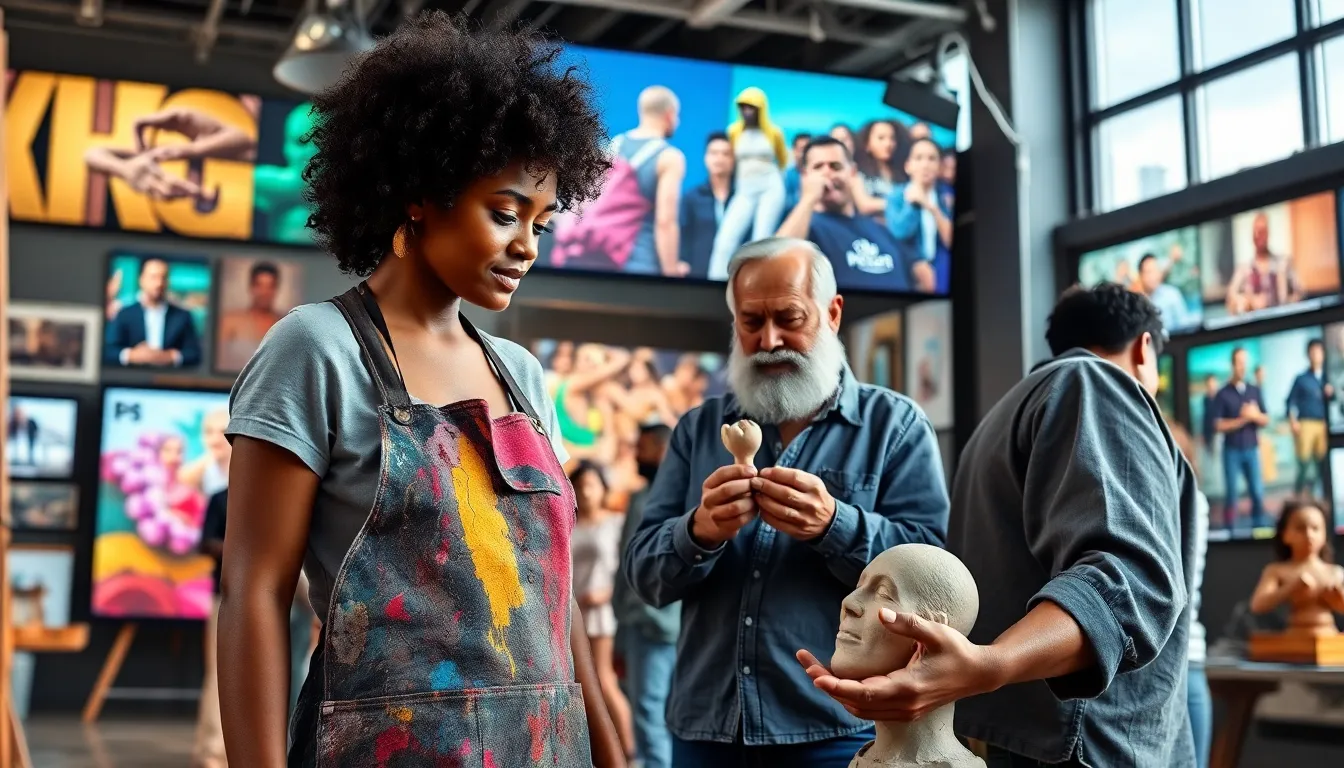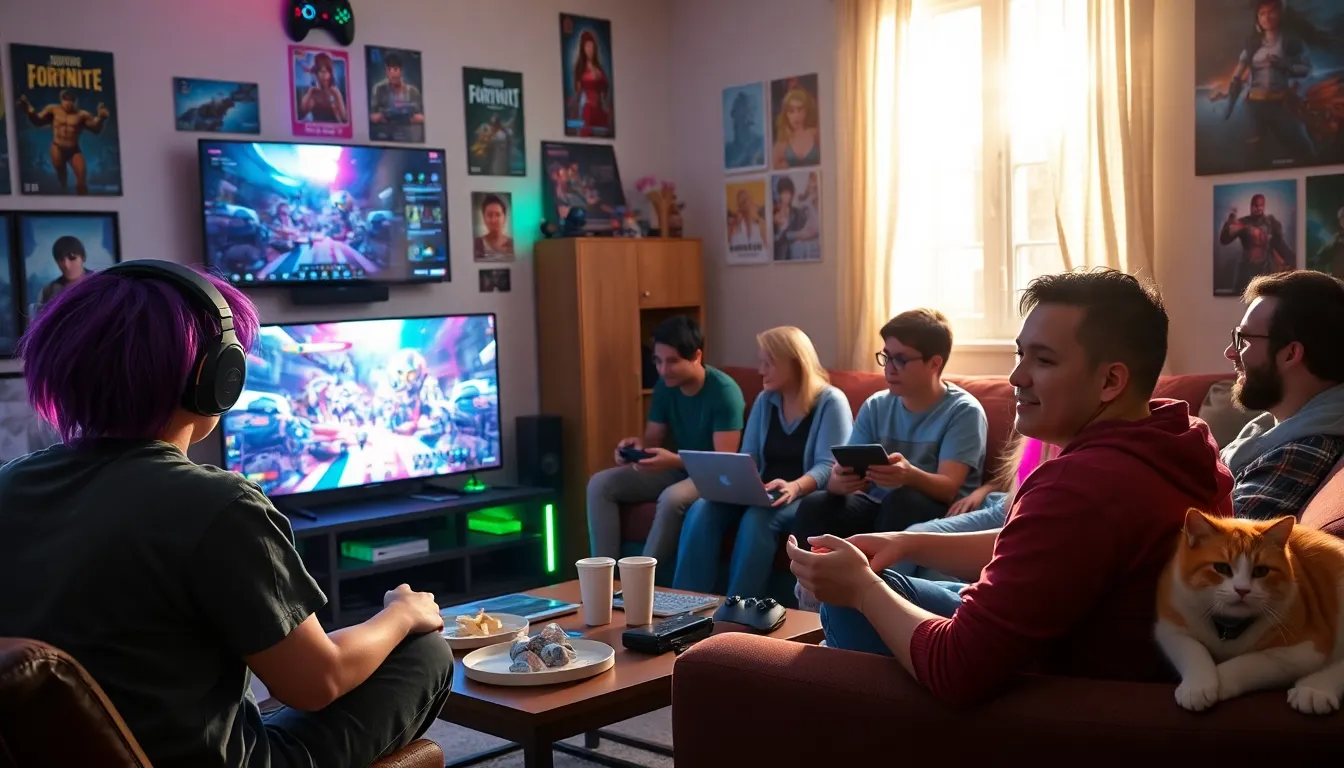Table of Contents
ToggleChoosing the right color for your home can feel like a high-stakes game of roulette. One moment you’re dreaming of serene blues and the next, you’re staring at a neon green that looks like it belongs in a sci-fi movie. But fear not! Interior color trends are here to rescue you from the clutches of indecision, guiding you toward hues that not only elevate your space but also reflect your personality.
Overview of Interior Color Trends
Current interior color trends emphasize vibrant choices that speak to individual preferences. Soft, calming hues like pastel greens and light blues create serene settings that evoke tranquility. In contrast, bold shades, including deep burgundies and royal blues, inject energy and sophistication into spaces. Neutral colors, such as warm beiges and soft grays, continue to serve as excellent backdrops, providing versatility with furnishings and decor.
Textures also play a significant role in color perception. Matte finishes enhance subtle colors, while glossy surfaces amplify vibrancy and depth. Incorporating metallic elements adds sophistication and glamour to vibrant palettes, creating a balanced look. Homeowners express their style through curated color combinations that reflect their personality.
Seasonal influences bring fresh perspectives on color applications. For example, autumn trends lean towards burnt oranges and earthy browns, while spring invites light pastels and soft whites. These seasonal shifts encourage experimentation with color pairings, allowing for dynamic interior designs.
In recent months, green hues gained notable popularity, reflecting a growing appreciation for nature. Rich, jewel tones continue to captivate, promoting a sense of luxury and comfort. This resurgence in color emphasizes a desire to create inviting, warm atmospheres.
Trends also showcase the transition from single-color walls to multi-tonal designs. Accent walls, color-blocking, and unexpected ceiling colors contribute to vibrant environments that break traditional norms. These creative applications not only enhance aesthetic appeal but also foster a sense of personal expression.
Choosing colors involves navigating preferences and current trends, ultimately creating spaces that resonate with individual styles while remaining on the pulse of contemporary design.
Popular Color Palettes for 2023
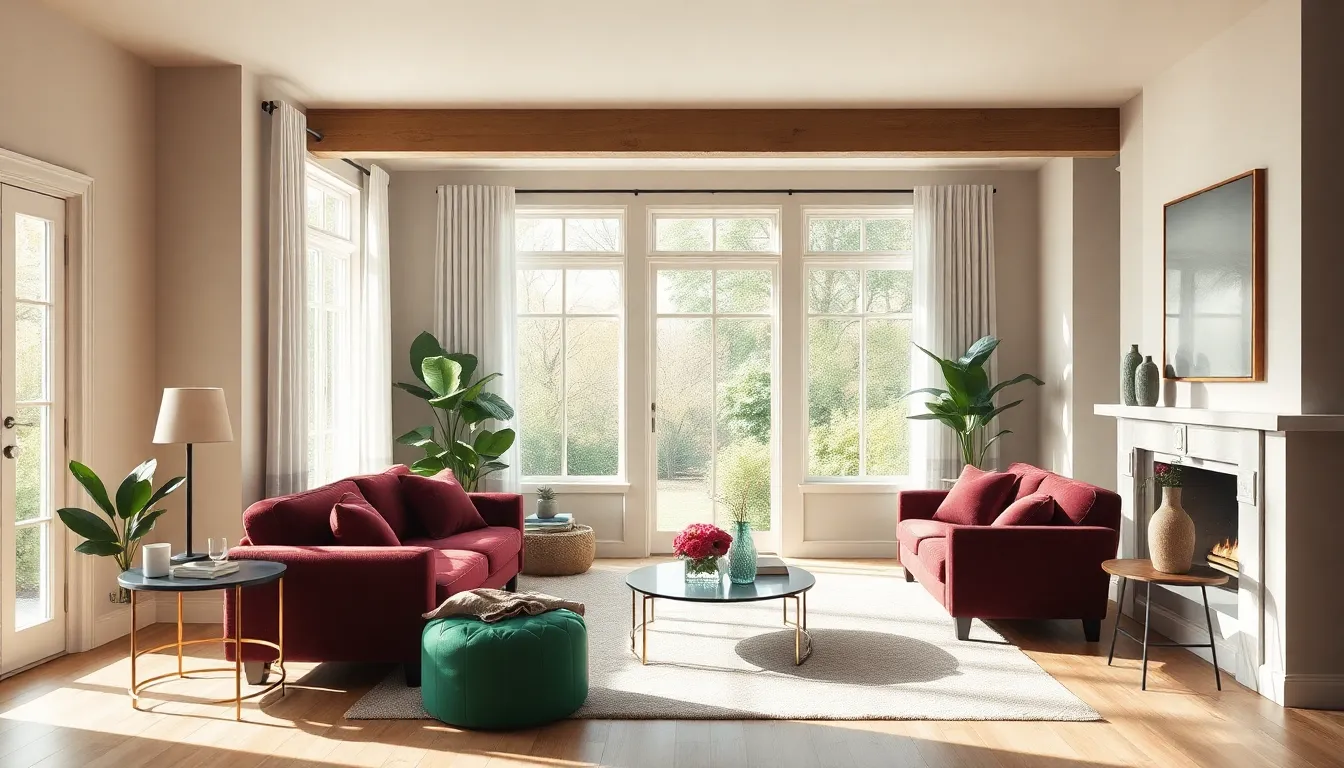
Color choices reflect both personality and current trends, shaping interior spaces in unique ways. Several standout palettes have emerged in 2023.
Neutral Tones
Neutral tones provide a calming foundation for any room. Colors like warm beige, soft gray, and creamy white offer versatility and balance. These shades work well with various textures and materials, enhancing visual interest without overwhelming the senses. Adding layers through furniture and decor elevates the aesthetic, creating inviting spaces. Designers increasingly pair neutrals with earthy elements, promoting a sense of comfort and tranquility.
Bold Statements
Bold colors showcase personality and make dramatic impressions. Deep burgundies, emerald greens, and royal blues invite energy and sophistication into spaces. Use bold hues strategically to create focal points, such as an accent wall or a vibrant piece of furniture. Transitions from muted backgrounds to striking accents emphasize individual style preferences. Jewel tones, in particular, evoke luxury and warmth, transforming interiors into rich, immersive environments.
Impact of Color Psychology
Color significantly influences emotions and perceptions within interior spaces. By understanding color psychology, individuals can make informed choices that enhance their living environments.
Emotional Responses
Colors evoke emotions that shape mood and influence behavior. For instance, calming blues create tranquility, while bold reds stimulate energy and passion. Soft greens, reminiscent of nature, promote relaxation and balance. Bright yellows inspire happiness and optimism. Conversely, dark colors may evoke feelings of sadness or introspection. Each hue taps into specific emotional responses, making it vital to consider the desired atmosphere when selecting interior colors.
Color and Space Perception
Color shapes spatial perception, affecting how rooms feel to occupants. Lighter colors can expand small spaces, making them appear larger and airier. Darker hues, on the other hand, can create a cozy, intimate feel in larger areas. Accent walls in vibrant shades can draw attention to specific features of a room. Understanding how different colors interact with light enhances the spatial dynamics of interiors, allowing for a tailored approach to color selection.
Sustainable Color Choices
Sustainability shapes the interior design landscape, influencing color selections. Eco-friendly pigments and natural dyes reduce environmental impact, promoting healthier living spaces. Many manufacturers focus on sustainable practices, ensuring products meet high environmental standards.
Natural colors harmonize with organic materials. Earthy tones, such as terracotta, muted greens, and soft browns, create a balanced atmosphere. These shades evoke a sense of connection to nature, essential for promoting well-being.
Low-VOC paint options simplify maintaining a green home. Volatile organic compounds contribute to indoor air pollution, so choosing low-VOC products enhances air quality. Brands increasingly offer a variety of colors that fit sustainability standards without compromising style.
Upcycling furniture and decor allows for creative color choices. Individuals incorporating color through recycled pieces contribute to waste reduction while expressing uniqueness. A bright yellow chair or a soothing teal table can become a conversation starter, blending sustainability and aesthetics.
Another trend involves utilizing natural light. Lighter colors make spaces feel expansive and airy, relying on sunlight to enhance vibrancy. Incorporating windows and mirrors complements these techniques, creating bright environments.
Artisan finishes also reflect commitment to sustainable practices. Textured surfaces in muted colors offer depth and interest while utilizing eco-friendly materials creates visual appeal. Craftspeople often apply traditional methods to enhance beauty and durability.
Lastly, community-driven color palettes emerge as collective efforts prioritize local aesthetics. Neighborhood influences shape color selections, ensuring that designs resonate with their surroundings. Sustainable color choices create spaces where people feel at home, reflecting both personal style and environmental responsibility.
How to Incorporate Trends in Your Space
Incorporating current color trends into interior spaces enhances aesthetics while allowing personal expression. Consider starting with neutral tones as a foundation. Warm beige and soft gray provide versatility, making it easy to add accent colors or textures.
To introduce vibrant shades, focus on statement pieces. Deep burgundy furniture or emerald green decor items act as focal points, drawing the eye and energizing a room. Applying colors to smaller areas, like an accent wall or a piece of furniture, helps maintain balance while embracing trendiness.
Experimentation encourages creativity. Combining soft hues, such as pastel greens or light blues, shaped by the seasonal shifts, adds an organic feel. Spring might invite pastel accents, while autumn colors like burnt oranges warm up a space.
Pay attention to textures while integrating colors. Matte finishes can softly blend shades together, while glossy surfaces make bold colors pop. Mixing textures not only heightens visual interest but also enhances the overall ambiance.
Sustainable choices further enhance the trends. Opt for eco-friendly paints with natural pigments. Choosing low-VOC options improves indoor air quality, aligning personal style with environmental responsibility. Earthy colors, like muted greens and soft browns, create a calming atmosphere that resonates with nature.
Stay attuned to color psychology when selecting shades. Calming blues and soft greens promote relaxation, while bold reds energize spaces. Understanding these influences shapes choices and creates harmonious living environments that reflect individual style and contemporary trends.
Embracing current interior color trends allows individuals to transform their living spaces into reflections of their personal style. By understanding the emotional impact of colors and experimenting with various palettes, they can create environments that resonate with their preferences.
The shift towards sustainable choices and the integration of textures enhance both aesthetics and well-being. As trends evolve, individuals are encouraged to explore bold statements and serene backdrops, all while remaining mindful of their environmental footprint.
Ultimately, the journey of selecting colors is about finding harmony between personal expression and contemporary design, resulting in spaces that feel truly like home.

